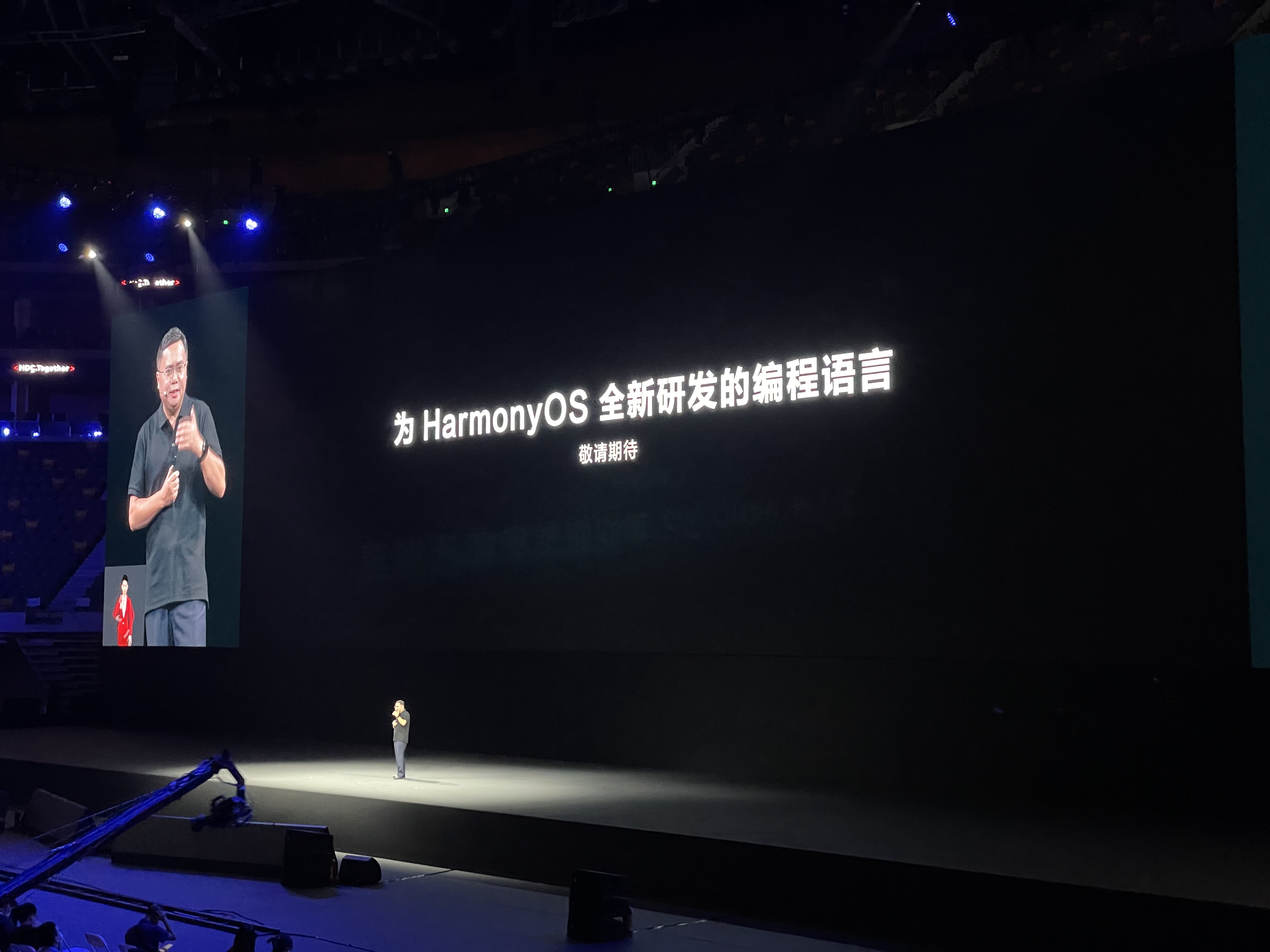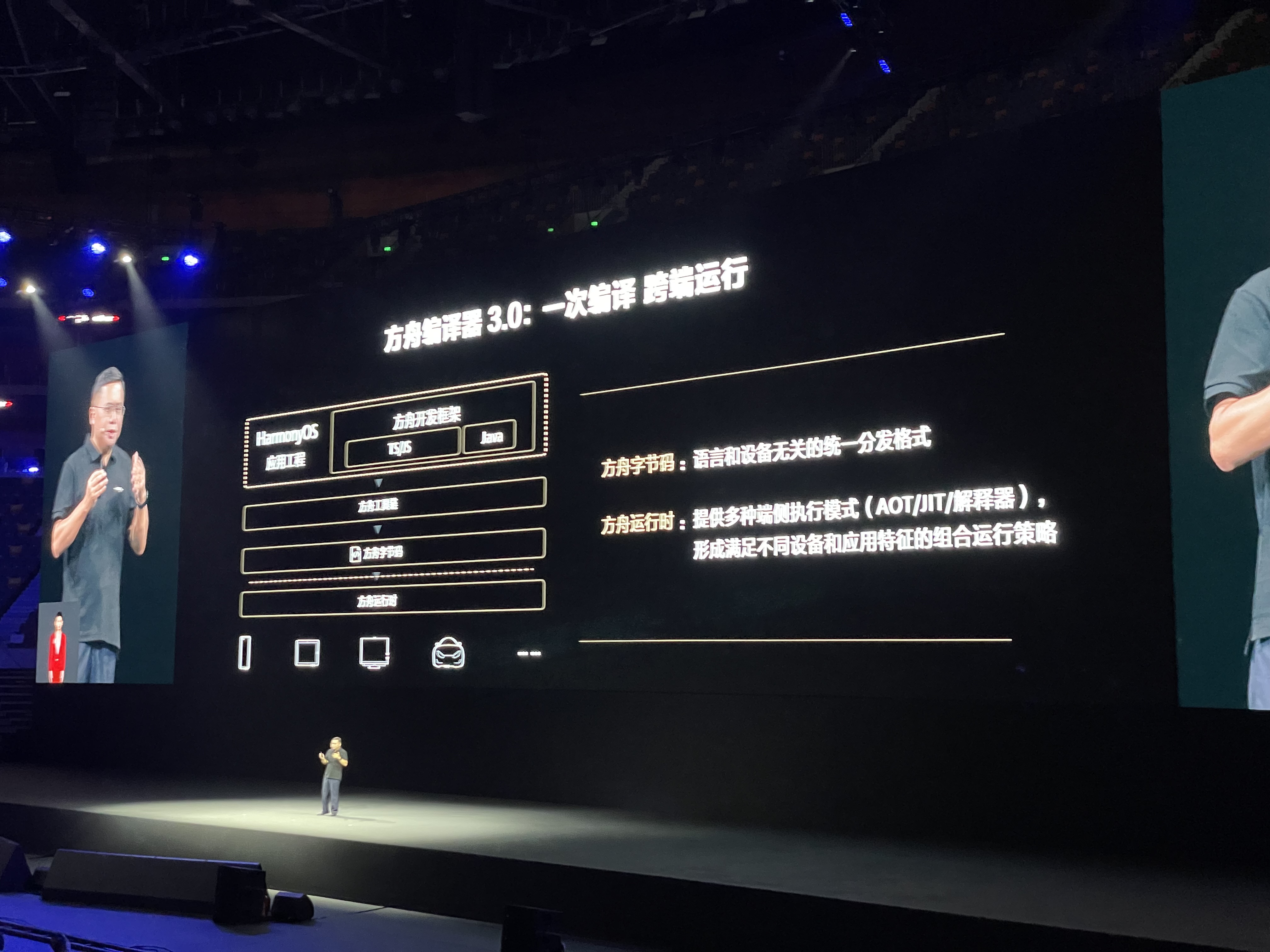This is my first time participating in a tech company’s conference as a automotive media representative. Although technology companies and automotive companies are increasingly intersecting, and even some tech companies are directly getting into the automotive industry, this feeling is still very novel to me. I hope to see these tech companies bring more interesting innovations and changes to the industry with the imagination of the internet.

This developer conference will last from October 22nd to 24th. Tomorrow, I will experience some of the features and products mentioned today, and you can look forward to follow-up reports related to the automotive industry.
HarmonyOS Timeline

At the 2019 Huawei Developer Conference, we saw the roadmap for Huawei HarmonyOS, and I have also summarized the entire timeline for Huawei’s HarmonyOS.
-
Planning of the proprietary operating system “HarmonyOS” started in 2012;
-
In 2019, HarmonyOS 1.0 was officially unveiled at the Huawei Developer Conference, and the first adaptation was with Huawei’s smart screen products. Yu Chengdong stated that HarmonyOS would be open-source;
-
In September 2020, HarmonyOS 2.0 was upgraded and beta test versions for large screens, smartphones, and car head units were released;
-
On December 16th, 2020, HarmonyOS 2.0 Beta testing for smartphones was officially released;
-
On June 2nd, 2021, HarmonyOS 2.0 was officially launched;
-
On October 22nd, 2021, Huawei released HarmonyOS 3 Developer Preview and HMS Core 6;

- Huawei announced that HarmonyOS 3 Developer Beta is expected to be released in the first quarter of 2022.
Features of Huawei HarmonyOS
The goal of HarmonyOS is not to replace Android, but to achieve a world of interconnected things. Its advantages include a microkernel, distributed architecture, and ecological sharing.- The basic function of a microkernel is to simplify kernel functionality, providing only the most basic services such as thread scheduling and interprocess communication (IPC). This makes microkernels highly flexible and allows them to appear in various end devices, which can be interconnected through IPC. Moreover, microkernels have good performance in terms of security and latency.
-
A distributed architecture can achieve fast connection and hardware capability sharing between different end devices, as well as cross-device data synchronization management and task scheduling.
-
The shared ecosystem provides convenience for developers, who only need to develop one version of the app that can be deployed on multiple platforms through HarmonyOS, achieving cross-device ecosystem sharing.
Current Progress
-
As of now, HarmonyOS has been activated on over 150 million end devices, including smartphones, tablets, watches, and smart screens.
-
Currently, HarmonyOS has more than 1,800 partners and 4,000 products under Hongmeng ZhiLian, with over 60 million units of new ecosystem devices shipped in 2021.

- Huawei announced the release of a new programming language developed for HarmonyOS, which will be launched as soon as next year.

-
With the support of 5.1 million developers worldwide, Huawei Mobile Services (HMS) ecosystem continues to grow rapidly, with over 173,000 apps integrated with HMS Core. In the first three quarters of 2021, the AppGallery app distribution volume reached 332.2 billion, and the revenue share of global developers increased by 62%.
-
HMS Core 6 was officially released, opening up 69 Kits in 7 major fields and 21,738 APIs, and cross-operating system capabilities for up to 13 of them.

- The Harmony Design System provides comprehensive design specifications for multi-device devices, atomic adaptive layout capability plugins, and service card templates that support different devices. It enables different devices to achieve consistent visual experiences while maintaining consistent overall design language.

- The ArkUI 3.0 framework of Ark DevKit brings a brand new declarative UI framework that uses TS/JS language, reduces the amount of front-end development design code for cross-platform applications, and greatly improves efficiency and performance.

-
The ArkCompiler 3.0 of Ark DevKit implements unified compilation across devices, and can run across platforms with only one compilation.
-
DevEco Studio 3.0 brings upgrades to efficient coding, cross-platform collaborative debugging, and multi-device integration testing tools, effectively improving the efficiency of cross-platform application development.

-
The HarmonyOS SDK has opened up the ability to use 6000+ TS/JS APIs, supporting efficient cross-platform distributed experience development. The ability to develop once and deploy across multiple platforms has helped leading global applications such as Sina News and Wish 107.5 rapidly cover multiple devices.
-
Huawei has launched its Map Kit in 22 countries.

About Automobiles
Gong Ti, President of Huawei Consumer Business Software, stated at the Huawei Developer Conference that Huawei’s smart cockpit will soon debut and provide an “upgraded” experience compared to traditional car systems. The advantage of Huawei’s smart cockpit lies in its strong interconnectivity and widely available ecosystem.

At the conference, Huawei also revealed a car system picture that had not been previously exposed. We can see a horizontally placed rounded rectangular screen, which is designed similar to a tablet.
-
The Dock bar at the bottom contains the homepage, seat ventilation, left and right partition air conditioning temperature/fan speed settings, and volume buttons.
-
The bottom of the car system desktop contains the vehicle settings, application drawer, Map Kit atomic service widgets, multimedia components, and other functions.
-
At the top is the account, reminder, time, driving recorder, wireless charging pad status, Bluetooth, wireless, and signal status display.
-
The center of the screen displays the wallpaper.From the overall design of UI, the display of the main wallpaper, atomic components, and other elements, it can be seen that Huawei has integrated many tablet and smartphone operating logics and usage habits into the intelligent cockpit of the car.
And the HarmonyOS smart cockpit will soon appear in the Jin-Grand Sianco medium-sized SUV at the end of this year or the beginning of next year!

Here I dare to make a speculation. There has been a plan for the SF series models in Sianco for a long time, and the next model after SF5 should be SF7. When we see the background of Mr. Yu’s PPT this time, it is obvious that it is the design style of SF, so the next model is very likely to be SF7.

And it is very probable that the cooperation with Sianco will be more extensive on this car.
Source: Huawei official
This article is a translation by ChatGPT of a Chinese report from 42HOW. If you have any questions about it, please email bd@42how.com.
